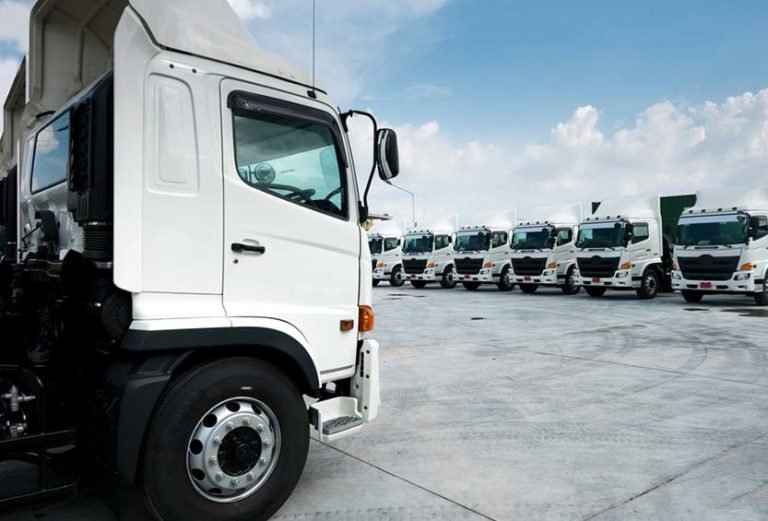The Advent Of Smart Vehicles & Drones In Delivery
As seen in Global Trade Mag. Click here for article.
Consumers will almost always pick the company that delivers faster. Having the most efficient supply chain is now, more than ever, the key differentiator that sets companies apart from their competitors. But more than this, companies that can predict behavior are the ones that will stand out ahead of the pack.
Since the early 2000s, logistics, freight, delivery and service companies have been outfitting their fleets with GPS tracking systems to monitor the location, movement and status of their fleets. For many companies, GPS tracking is where logistics technology begins and ends, with businesses investing thousands of dollars into monitoring their vehicles and reacting to ‘what happened’. But companies that are positioning themselves for the future recognize that the real value lies not in just determining what happened, but rather in using data obtained through intelligent logistics solutions to predict future scenarios, mitigate risks and avoid adverse outcomes altogether.
By accessing data in real-time through internet of things (IoT) technology, businesses can anticipate their customers’ needs and desires before they do, enabling them to deploy resources more strategically and sharpening their competitive edge. Using the real-time data collected, which helps identify where to trim the fat or drop what’s not working, companies are now able to make quicker, bolder and more informed business decisions. And beyond helping companies streamline their logistical processes and distribution networks, IoT technology is also driving their expansion into new untapped markets with the advent of smart vehicles and drones.
Using smart vehicles and drones to expedite delivery
One of the key – and arguably most important – innovations in intelligent logistics is the development of the delivery drone. The immediate and obvious benefit of drones is faster delivery, enabling consumers to speedily receive products from vendors like Amazon, Sam’s Club and Whole Foods. Drones allow for expedited deployments; waiting for trucks to dispatch takes significantly longer. However, even more important is the impact drones are making on reaching developing societies that, up to now, have missed out on decades of infrastructure development.
Drones using IoT technology are connecting developing countries with limited infrastructure to the global village, thus enabling them to participate in the global economy. This is opening new markets for business that were previously closed to them in the past.
Smart logistics in vehicle fleet management
Delivery vehicles that get caught in traffic or take convoluted routes to their locations can cost businesses hours of lost productivity. But by using Real-Time Location System (RTLS) technology, IoT devices allow businesses to easily and precisely track driver locations.
Smart trucks that implement IoT tech do more than ensuring the driver is on task, on time and performing safely at optimum levels. IoT devices are also enabling businesses and their delivery fleets to gather even more valuable data, such as identifying the fastest route to avoid traffic, knowing when the trailer is unhitched or when the recipient has opened a dispatched package. Companies like McDonald’s are experimenting with delivery trucks that can map the fastest and most efficient routes on their own, thereby reducing emissions and speeding up delivery.
Drivers, too, benefit from IoT tech in their vehicles. Smart logistics tech can also monitor the environment on all four sides of a vehicle, which helps prevent costly mistakes and accidents.
By leveraging IoT technology, companies can now execute every step of the delivery process on-site. For a happy ending, wireless sensors notify companies when the order was opened, allowing company representatives to ‘wow’ customers with a text alert saying, “did you enjoy the product?”
Driverless vehicles: how can they help me?
Back in 2017, an English online grocery chain named Ocado released a self-driving delivery truck into the backstreets of London. The little truck was accompanied by two human monitors and delivered goods to London residents over the course of ten days, all by using its onboard IoT mapping software.
Ocado’s mini-truck was unable to carry as much cargo as its bigger, 18-wheeler brothers, but it did arrive at customer houses faster and with less hassle than larger vehicles could have. Online buyers, meanwhile, could use Ocado’s smartphone app to track their delivery and receive updates right as the Ocado van pulled up to their place of residence.
The Ocado van was the first in a continuing development of vehicles that can deliver goods quicker than traditional freighters, with more cost savings. Additionally, autonomous delivery vehicles can be scaled up more quickly; it’s easier to fit 20 small vans on the streets versus 20 diesel trucks.
IoT technology is future-proofing businesses for long-term returns
To today’s businesses, with the advent of smart vehicles and drones integrating IoT tech into supply chains may seem costly or even risky. But its striking long-term benefits and savings far outweigh the initial costs. Companies deploying intelligent logistics technologies within their fleets have fewer safety concerns, less staff compensation claims and more satisfied customers. With an eye on the long game, smart companies are employing IoT solutions to go beyond merely being ‘good’ at logistics: by mining IoT data, they’re investing in long-term returns for their businesses.

